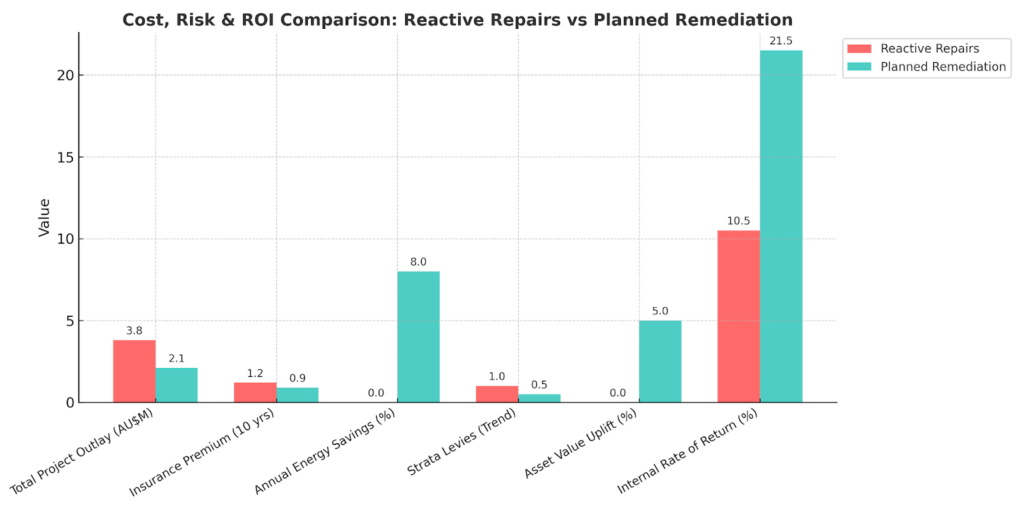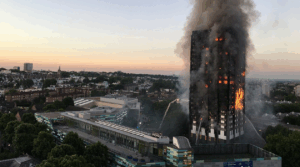How should a building face remediation consultancy process looks like for you – explained from first phone call to final sign‑off
When you search how should a building face remediation consultancy process looks like for you, you deserve more than a checklist—you want the full, lived experience. In the next few minutes we’ll unpack a proven building façade remediation road‑map used by CPR Facade Upgrade Specialists, the Australian leaders in scaffold‑free™ façade consulting services. From granular building façade inspection to structural façade restoration and post‑project façade lifecycle management, this guide puts you in the driver’s seat so you can choose the right building envelope consultants, keep costs transparent, and safeguard your asset for decades to come.
At a Glance: What You Will Learn
- Why exterior building repair consulting eliminates hidden, compounding costs
- How SFS360® converts raw façade condition assessment data into actionable insight
- The complete façade remediation process timeline, costs, and compliance milestones
- A real‑world case study of a 33‑storey commercial building façade repairs programme
- Common pitfalls and how expert façade consultants keep you clear of them
- A glossary of must‑know terms so strata committees, building managers and owners speak the same language
Why Engage Expert Façade Consulting Services in the First Place?
A deteriorating façade is more than cosmetic: it invites water infiltration, accelerates concrete spalling, and raises serious building façade safety compliance risks. Professional consultants combine engineering science with rope‑access innovation to:
- Quantify risk through a bespoke façade condition assessment before unseen defects mushroom into litigation.
- Create remediation planning for façades that balances cost, occupant disruption, and environmental impact.
- Navigate regulations (NCC 2025, NSW DBP Act, combustible‑cladding bans) with minimal stress.
- Deliver scaffold‑free access so you avoid six‑figure scaffold hire, sight line block‑outs and extended project durations.
- Improve ESG metrics by reducing embodied carbon through targeted repair rather than wholesale replacement.
Put simply, professional exterior building repair consulting swaps uncertainty for an executable, fundable strategy—saving time, money and reputational capital.
Step 0 – Discovery Call & Rapid Desktop Review
Every successful project begins with clarity. During a 30‑minute discovery call CPR’s project director unpacks your concerns—be it hairline cracking, unexplained water staining or insurance‑driven compliance. Drone imagery, available building plans and maintenance logs are reviewed within 48 hours so the proposed façade condition assessment mirrors your unique risk profile.
Outcome: A bespoke inspection brief, fixed quotation and draft programme delivered within two business days.
Step 1 – Comprehensive Façade Condition Assessment & Building Façade Inspection
SFS360®: Turning Data into Certainty
The cornerstone of any building façade remediation strategy is trustworthy data. CPR’s SFS360® Sky Facade Scope 360™ system grids the entire exterior, reaching every panel using Upseiling®, MARS™ multi‑anchor rigs and PEARS® portable elevators—no disruptive scaffold or lift closures.
Key deliverables:
- Close‑up visual & tactile survey for corrosion, delamination, efflorescence, sealant fatigue and cladding non‑compliance.
- Infra‑red thermography & drone LiDAR to detect hidden moisture and voids behind precast panels.
- Concrete chloride testing and pull‑off adhesion tests to verify material integrity.
- Digital façade model tagging each defect by drop, level and patch number, instantly shareable with stakeholders.
- Priority risk alerts where immediate water infiltration façade repair is recommended.
Outcome: A data‑rich report that underpins every downstream decision, accepted by insurers and statutory bodies alike.
Step 2 – Remediation Planning for Façades: From Findings to Feasible Solutions
Inspection without planning stalls projects. CPR’s SE2EPC® Sky End 2 End Project Care® framework converts raw findings into a cost‑ed, achievable roadmap.
- Defect Prioritisation Matrix – ranks each item by safety, aesthetics, durability and asset value impact.
- Value‑engineering workshops – align remedial materials (elastomeric coatings, FR aluminium panels) with climate exposure, heritage controls and budget.
- Phased cash‑flow modelling – enables strata or asset managers to stage works over several fiscal years while maintaining compliance.
- Digital twin integration – all remedial plans are layered onto the BIM model so facility teams understand future maintenance touch‑points.
Outcome: Clear line‑of‑sight from façade inspection to commercially‑viable, regulator‑ready execution.
Step 3 – Regulated Design & Building Façade Safety Compliance
Modern remediation must satisfy an evolving web of national and state codes. CPR’s in‑house façade engineering consultancy team retains chartered structural, fire and building certifiers who:
- Lodge Design Practitioner (DP) documentation under the NSW DBP Act and equivalent VIC and QLD pathways.
- Provide Performance Solution Reports where heritage constraints clash with prescriptive NCC Clauses.
- Issue Building Practitioner (BP) sign‑off, ensuring all on‑site works meet the approved design and the NCC 2025 façade fire‑performance amendments.
- Compile compliance certificates, warranties and maintenance manuals in a secure cloud portal for instant audit‑ready retrieval.
Outcome: Peace of mind that your façade works to stand up to insurer, council and future‑purchaser scrutiny.
Step 4 – Scaffold‑Free™ Execution & Structural Façade Restoration
Traditional scaffold blankets your building for months and can cost more than the repairs themselves. CPR’s patented technology flips the script:
- PEARS® Power Elevator lifts personnel, SkyPod® encapsulated workstations and 200 kg of materials to the workface in minutes.
- SkyPod® Enclosure forms a sealed micro‑environment for grinding, patching or coating—preventing dust migration and protecting pedestrians below.
- ASP’S™ Accredited Service Partners™ are triple‑certified in IRATA rope access, remedial trade craft and PEARS® Academy safety procedures.
Within this environment, we perform the full gamut of commercial building façade repairs:
- Concrete spalling repair & cathodic protection to arrest reinforcement corrosion.
- Water infiltration façade repair using high‑performance sealants and cavity flashings.
- Non‑combustible cladding replacement with CodeMark‑certified aluminium panels.
- Protective coating & repainting using high‑build elastomerics for coastal UV and salt spray.
- Structural façade restoration—including crack injection and steel lintel remediation—under live‑load conditions.
Outcome: Faster, cleaner and 15–25 % cheaper delivery compared with fixed scaffold, without compromising public safety or building operations.
Step 5 – Façade Lifecycle Management & AfterCare™
Buildings breathe, move and age. A one‑off repair can leave you back at square one within years. CPR embeds façade lifecycle management into the ownership journey:
- Five‑year preventative maintenance schedule—small rope‑access tune‑ups keep warranties intact.
- Digital defect tracker—drone imagery compared against the SFS360® baseline to detect new anomalies early.
- AfterCare™ programme—stand‑alone or bundled service offering annual wash‑downs, seal inspections, and rapid‑response call‑outs.
- ESG & reporting dashboards—quantify embodied‑carbon savings achieved through targeted repair over replacement.
Outcome: An asset that resists Sydney salt‑spray, Melbourne freeze‑thaw and Adelaide dust storms with minimal unplanned spend.
Step 6 – Post‑Project Knowledge Transfer & Continuous Improvement
Upon practical completion CPR delivers an interactive hand‑over session with site managers, security and maintenance teams. QR‑coded plaques at roof level link directly to digital manuals, ensuring that future contractors work from the same play‑book. Lessons learned—good and bad—are logged in the project’s digital twin, so subsequent owners inherit a transparent façade history.
Cost, Risk & ROI: Quantifying the Value of Building Façade Remediation
According to 2024 chartered quantity‑surveying data, reactive façade repairs cost on average 2.7 × more than a planned programme once scaffold, tenant disruption and insurance penalties are factored in. To make the difference crystal‑clear we have modelled an equivalent 20‑storey commercial tower under two scenarios:

| Cost Metric | Reactive Repairs | Planned Remediation | Typical Saving / Uplift |
| Total project outlay | AU$3.8 m | AU$2.1 m | –45 % CAPEX |
| Insurance premium (10 yrs) | AU$1.2 m | AU$0.9 m | –25 % |
| Annual energy spend | Baseline | –8 % post‑upgrade | 8 % OPEX saving |
| Strata levies | Escalating | Held flat 5 yrs | Cost stability |
| Asset resale / rental | — | +3–7 % value uplift | 3–7 % ROI |
| Internal Rate of Return (10 yrs) | 9–12 % | 18–25 % | ≈2 × IRR |
Table 1: Projected savings and financial returns when façade remediation is undertaken proactively.
Figure 1: Visual comparison of percentage savings and ROI uplift between reactive repairs and planned façade remediation.
Calculated over a ten‑year horizon, a planned façade remediation delivers an IRR of 18–25 %—double the return of a wait‑and‑fix approach while slashing risk exposure.
Real‑World Case Study: 180 George Street, Parramatta (33‑Storey CBD Tower)
Challenge: The 2001‑built tower suffered widespread concrete cancer, failed ACM cladding, and water ingress affecting premium tenancies.
Solution: CPR executed a three‑stage façade remediation process:
- SFS360® inspection across 11,680 m² of surface area.
- SE2EPC® planning that staggered noisy works outside trading hours.
- Scaffold‑free™ rope‑access repairs, replacing 1,150 m² of combustible panels and injecting 3,400 linear metres of cracks.
Outcome:
- Project completed six weeks ahead of schedule, 14 % under budget.
- Insurance premium dropped AU$0.15 million per annum.
- Zero tenant relocations—no lost rent.
Common Pitfalls & How to Avoid Them
- Focusing only on visual defects. Hidden reinforcement corrosion doubles repair costs—insist on destructive testing.
- Selecting the lowest‑price tender without scaffold‑free capability. Access costs can blow out by 40 %.
- Neglecting compliance path. Without DP/BP sign‑off, you risk occupation‑certificate refusal.
- Deferring lifecycle maintenance. Minor seal failures snowball—embrace AfterCare™.
Would you like to avoid Property Structural Issues? Read this article that may help you to take action.
Glossary of Key Building Façade Remediation Terms
| Term | Definition |
| Building façade remediation | The complete process of diagnosing, planning and repairing exterior building envelopes. |
| Façade condition assessment | Systematic survey to document and rate exterior defects. |
| Building envelope consultants | Specialists who diagnose and design repairs for façades, roofs and wall systems. |
| Water infiltration façade repair | Targeted sealing measures to stop moisture ingress. |
| Structural façade restoration | Repairs that reinstate the load‑bearing capacity of façade elements. |
| Façade lifecycle management | Planned maintenance programme extending façade service life. |
Expanded Frequently Asked Questions
Q. Can the building remain occupied during repairs?
Yes. Rope‑access crews work outside the envelope; noisy works are scheduled mid‑morning.
Q. How long does a typical 20‑storey façade take?
Allow 12‑20 weeks depending on defect volume and weather.
Q. Are rope‑access technicians insured?
Absolutely. CPR carries AU$20 million public liability and workers’ compensation for all ASP’S™ teams.
Q. Will the repairs match existing colours and textures?
Our coatings laboratory colour‑matches elastomerics and aggregates to within ΔE < 1.
Q. How is quality verified?
Each drop is photo‑documented and signed off in SE2EPC® before the next progress payment.
Ready to See How a Building Face Remediation Consultancy Process Looks for You?
Book an obligation‑free façade consultation with CPR Facade Upgrade Specialists today. Click here to secure your Scaffold‑Free™ assessment and take the first step toward a safer, longer‑lasting building envelope.
Need more details first? Explore our specialist pages on Building Façade Inspection and Regulated Design & Compliance.






